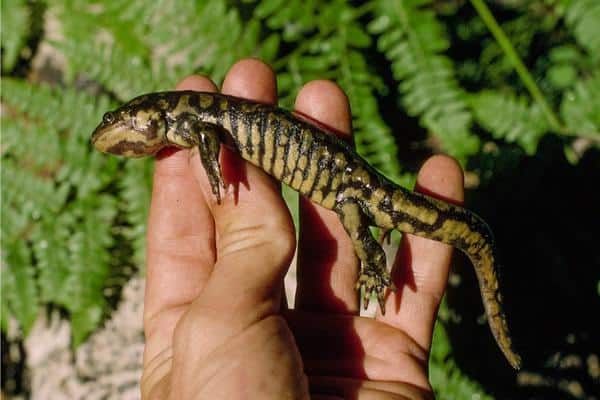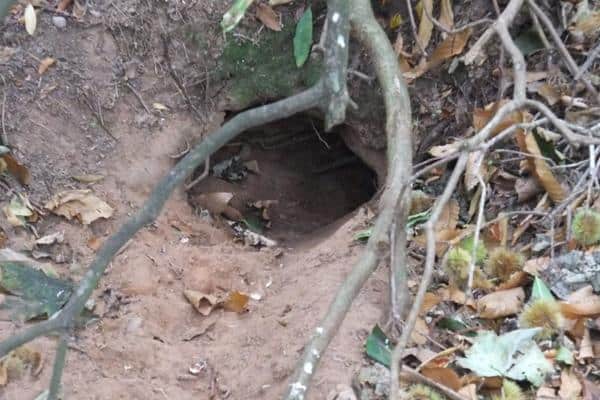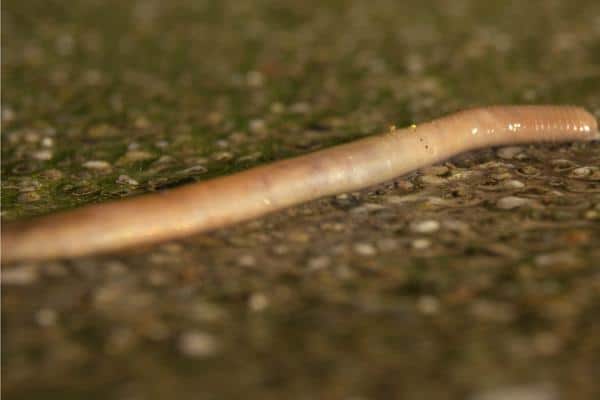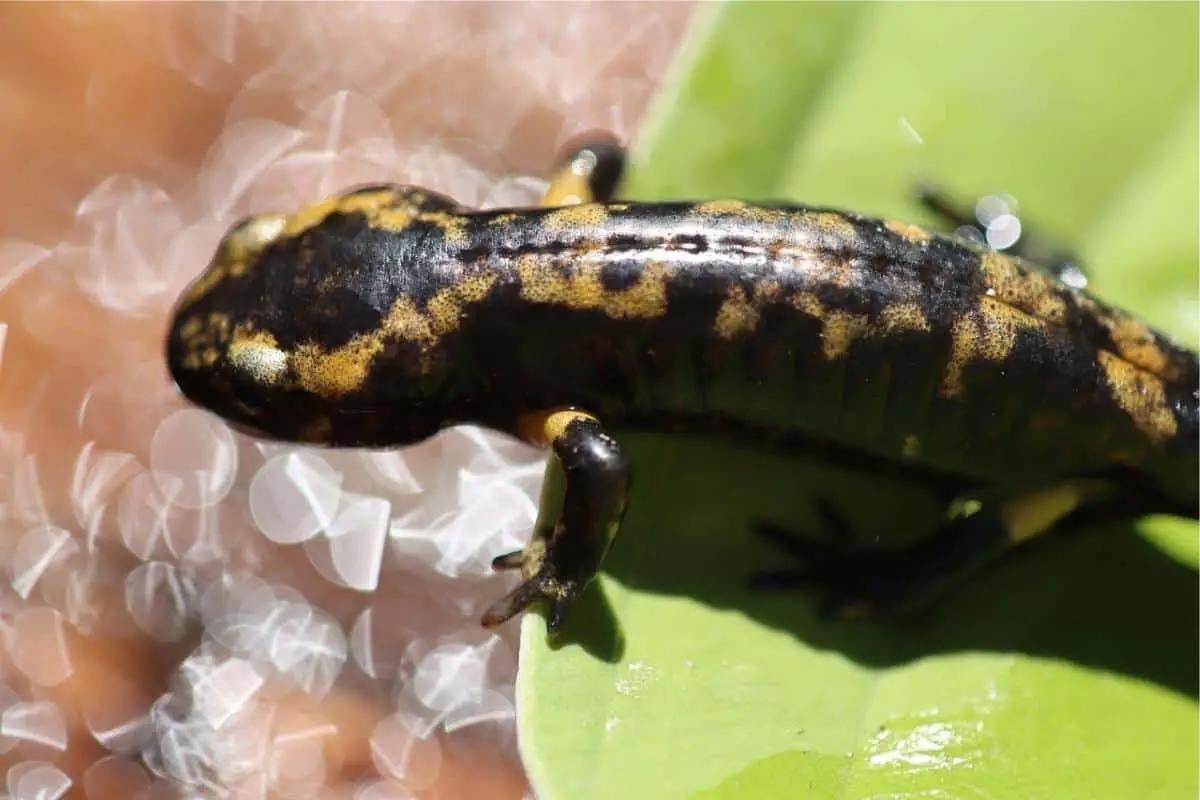Colorado is no stranger to animals and has a rich diversity of creatures, from the mighty moose to a tiny frog. This state is home to thousands of invertebrate species, over 750 species of vertebrate animals, and 70 species of reptiles and amphibians. But are there any salamanders in Colorado?
Salamanders In Colorado

There is only one species of salamander in Colorado, and that is the western tiger salamander (Ambystoma mavortium). This salamander was designated the official state amphibian of Colorado in 2012.
The western tiger salamander has a total of 3 subspecies found in Colorado:
- Barred tiger salamander (Ambystoma tigrinum mavortium) in eastern Colorado.
- Blotched tiger salamander (Ambystoma tigrinum melanostictum) in north central and northwestern Colorado.
- Gilled tiger salamander (Ambystoma tigrinum nebulosum) in central and western Colorado.
Distinguishes Between The 3 Subspecies
Even though the three subspecies of tiger salamander look extremely similar in size and shape, they do differ in body color and pattern.
- Barred tiger salamander – The body is black with yellow bars or blotches.
- Blotched tiger salamander – Dark olive, gray, or cream body with black spots or blotches that are irregular.
- Gilled tiger salamander – Dark brown or dark gray body with dark spots in shades of brown or black. May also have an olive or gold body with black spots.
Description Of Western Tiger Salamander
Tiger salamanders are actually a species of mole salamander and are one of the largest terrestrial salamanders found in North America. They measure about 12 ½ inches in total length, with a body color that ranges from goldish yellow or olive green to black.
This amphibian often has black blotches or spots on a lighter-colored body or light yellow spots on a black body. The exact markings and colors, however, vary from one subspecies to the next.
Western Tiger Salamander Habitat

The western tiger salamander spends most of its time underground in burrows, but they can sometimes be found above ground. Because they do burrow in the ground, they need an area with loose soil.
They also need to keep their skin moist, so they typically stay underground except for at night or in the spring and fall months.
The western tiger salamander thrives in moist areas that are near prairies or wetlands. Although not extremely common, they have been found in root cellars and basements.
As an adult, the western tiger salamander usually won’t return to water unless it’s time to breed. These salamanders will only breed in areas without large fish, such as wetlands or ponds where there are no prey fish that could feast on the eggs and larva.
The western tiger salamander is the only amphibian that has been documented in all of Colorado’s counties. It has been seen in elevation ranges of up to 12,000 feet
Food Source for Western Tiger Salamander
Like other species of salamander, the western tiger salamander feeds on insects, including the adults, nymphs, and larvae, as well as frogs, and small invertebrates. Examples of their food source are earthworms, crickets, slugs, worms, and snails.

Life Cycle Of The Western Tiger Salamander
During late winter or early spring, the western tiger salamander will head out to breeding ponds to breed. After a short courtship between a male and female tiger salamander, which typically lasts a day or two, the female salamander will lay about a hundred eggs or less. It will take on average 4 weeks for the eggs to hatch.
The larvae that emerge from the eggs will stay in the breeding pond until they grow into adults, which can take anywhere from 2 months up to 5 months. These large salamanders can live for up to 15 years.
Western Tiger Salamander Diseases
Tiger salamanders carry two serious diseases: Batrachochytrium dendrobatidis and ranaviruses. Batrachochytrium dendrobatidis affects most frog species, while ranaviruses infect fish, reptiles, and amphibians. The good news is that these diseases are not transmittable to humans.
Tiger Salamander Toxicity
The tiger salamander is poisonous, though this is a common trait with a lot of other amphibians. They secrete a poisonous substance from the glands found in their tail that has an unpleasant taste to predators.
While it isn’t likely that humans will decide to take a bite of the western tiger salamander, it isn’t uncommon for dogs to try to nibble on this amphibian. Unfortunately, eating, chewing, or licking a tiger salamander can cause poisoning.
To humans and large animals, the substance is typically only irritating, but it can be potentially fatal to smaller animals, such as another amphibian or a mouse.
While they are poisonous, they are not venomous. This means that even if a tiger salamander bites you, it doesn’t have venoms like a snake or spider, and is unlikely to cause harm.
Conclusion
While Colorado has thousands upon thousands of different animal species, there are only one species of salamander in the state. The western tiger salamander is the lone salamander species found in Colorado. Despite it being the only species, it has been seen in all 64 counties throughout the state.




